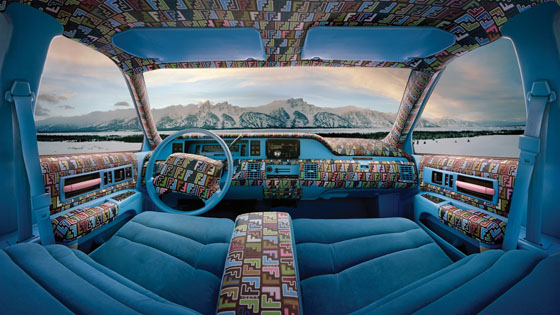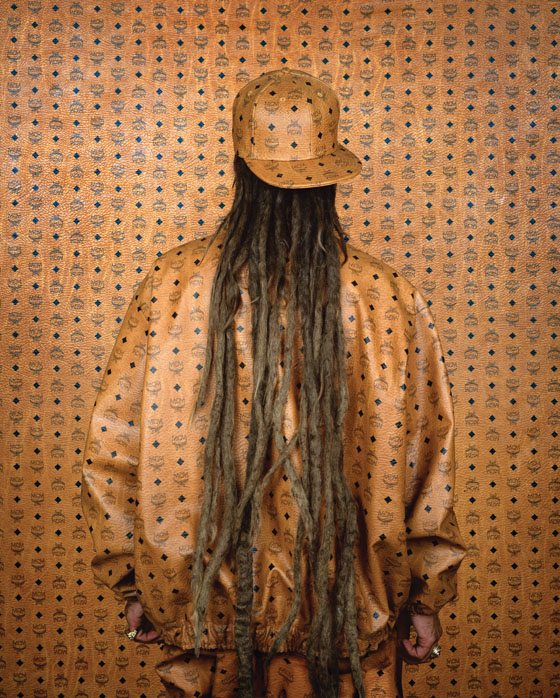
Depending on the viewer’s perspective, Luis Gispert’s “decepción” series chronicles either couture creations or black market counterfeits. After embarking on a project to photograph unique vehicle interiors, Gispert stumbled across a niche culture of car clubs and enthusiasts who upholster cars with luxury branded fabrics. Seeking out these rarities over several years, Gispert was able to track down a BMW with Burberry check lining the seats, interior doors, and trim; a Mark VII with Fendi detailing; and a handful of similarly detailed cars.
Gispert trained first in film, earning a BFA from The School of the Art Institute of Chicago in 1996. Later, he shifted genres, picking up an MFA in sculpture from Yale in 2001. Describing himself broadly as a “visual artist,” Gispert moves seamlessly from film, to photography, to sculpture or installation, embracing the genre-melding implied by the multi-media label. His mandate has constantly been to avoid cliché statements, through a process of cultural and personal exploration. His earlier works have presented subtle connections, like the juxtaposition of cheerleaders and hip-hop iconography.
Currently Brooklyn-based, Gispert was born in New Jersey, but spent the majority of his childhood in Miami. Growing up in a Cuban-American household, his family celebrated the individuality of street kicks or souped-up rides. And Miami is where he first experienced the street style referenced in this series.
The aesthetic Gispert seeks out traces back to Dapper Dan, a Harlem tailor on 125th St. dedicated to all things custom. It’s where anyone from boxing champions like Mike Tyson, rappers Eric B or LL Cool J, or even drug dealers looking for street cred, would come for customized creations. Through the ‘80s and ‘90s, as hip-hop permeated into mainstream culture, the idea of customized style became a type of status symbol. And it’s a style that’s still reflected in groups like NYC’s infamous Puerto Rican Schwinn Club or the subjects of “decepción.”
The root of the style is to make something special and personal. That subculture is where Gispert really gets in gear. In his words, the project explores “the subculture of the impostor or faux design world. [It’s] not so much about traffic of fake design goods, more of people that find bootleg materials, then make their own.” These are not mere Canal Street impostors. While fashionistas often shun faux commodities as lowbrow, Gispert refuses to disparage his subjects. Rather, they are portrayed as style stars, proudly showcasing unique perspectives without genuine regard for critical appeal.
In particular, “decepción” evolved from Gispert’s desire to combine landscape photography with interesting vehicles. Gispert photographs the interiors of these rare vehicles using high and medium-resolution film photography, then searches for views of an idyllic landscape. By seamlessly “inserting” the landscape into the vehicle’s windows, the extraordinary vehicle is transported from its everyday surroundings, and the composite image is made overwhelmingly beautiful and somewhat surreal. A larger than life feeling, mirroring the subjects themselves, is conveyed through the printing process: the prints are on a 1:1 scale, which means that a piece like “C-Print of L.V. Escalade” is six feet tall and nine feet wide. Of the final prints, Gispert admits there is a “certain amount of fantasy going on.”
Gispert is currently showing at the Mary Boone Gallery, September 8—October 22, 2011, maryboonegallery.com or luisgispert.com
– Michael Cohen


